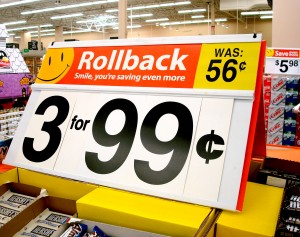
Image from: http://financialpostbusiness.files.wordpress.com/2011/10/1006tims.jpg?w=620
Tim Horton’s recently added beef lasagna casserole to its lunch menu, hoping to gain some market share in the lunch market.1 It is also offering garlic bread, along with larger portions of its soups and chili. According to Donna Finelli, director of brand marketing for Tim Hortons, it was a “natural fit” among Tim Horton’s other comfort food offerings of hot chocolate, coffee, doughnuts, and soup.1 Currently, Tim Horton’s is first in the breakfast market and second in the lunch market, behind McDonalds.1

Image from: http://i.huffpost.com/gen/378944/thumbs/r-TIM-HORTONS-PASTA-large570.jpg
Although Tim Horton’s is trying to differentiate amongst other fast-food chains by offering a known Canadian comfort food, this tactic does not seem to offer Tim Horton’s a significant competitive advantage. True, lasagna cannot be purchased from competitors such as McDonalds and Starbucks, but what is stopping consumers from eating pasta at major pizza chains like Pizza Hut or Fresh Slice? Existing customers may try Tim Horton’s lasagna and new consumers may try its other products; however, one new product alone is not sufficient to truly distinguish Tim Horton’s from other fast-food restaurants. After all, other fast-food chains are also introducing new products. In the end, it boils down to taste preferences, competitive prices, and convenience.
Word Count: 199
1. http://www.thespec.com/news/business/article/610643–hortons-goes-heavy-lasagna-now-on-the-menu





